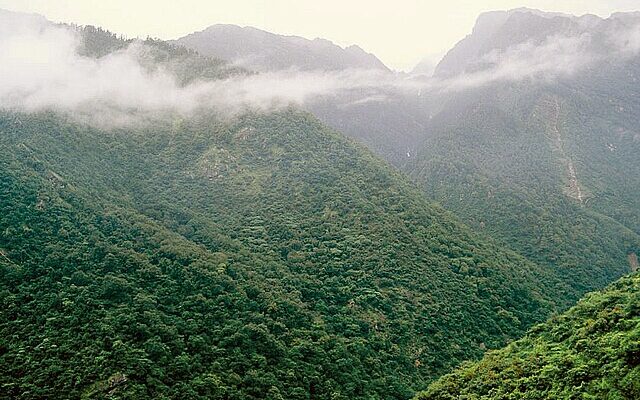
Researchers using a drone to study Tibet’s Yarlung Zangbo Grand Canyon recently made a discovery that has left them in awe. Nestled deep within this remote and obscure region in Asia, a place where ancient traditions often intertwine with untouched natural wonders, they found a colossal tree the size of the Statue of Liberty.
A cypress tree in China is the tallest tree ever discovered in Asia. It is also believed to be the second-tallest tree in the world, standing at an astonishing 335 feet (102 meters) tall. At this height, the tree would tower over the Statue of Liberty, which stands at 305 feet (93 m).
The gigantic cypress was discovered in May by a Peking University research team at the Yarlung Zangbo Grand Canyon nature reserve in Bome County, Nyingchi City, in the Tibet Autonomous Region of China, according to a statement released by the university.
The species the cypress belongs to is unclear, although Chinese state media publications suggested it is either a Himalayan cypress (Cupressus torulosa) or a Tibetan cypress (Cupressus gigantea).
Before this discovery, Asia’s tallest tree was a 331-foot-tall (101 m) yellow meranti (Shorea faguetiana) located in the Danum Valley Conservation Area in Sabah, Malaysia, writes LiveScience.
The cypress falls just short of the world’s tallest tree on the planet, named Hyperion, a Redwood in California discovered in 2006 that is 380.8 feet tall.
The researchers discovered the enormous tree by using a drone carrying a lidar sensor. Similar to sonar and echolocation, lidar uses laser light instead of sound to map out surroundings. “Using the data gathered by the lidar, researchers from Peking University, the Xizijiang Conservation Center and the Shan Shui Conservation Center created a 3D model of the huge tree, which was confirmed as being the largest tree in Asia after a field survey.
This tree has broken previous records set by the same team for the tallest tree in China: In April last year, they discovered a 252-foot tree in Medog County, while only a month later, they found a 272-foot-tall fir tree in southwest China.
There are also a huge number of massive trees in this area, with 25 over 295 feet having been discovered near the record-breaking tree. Himalayan and Tibetan cypresses are rare in the wild, with only a few living in the Yarlung Zangbo Grand Canyon National Nature Reserve. They are a first-class protected plant species in China, according to Newsweek.
The researchers hope to monitor the cypress trees in the area in the long term, studying their distribution density, population, and age. They also hope to explore further into the Yarlung Zangbo Grand Canyon, to investigate the biodiversity and trees that remain unstudied.”
The Tibet Autonomous Region, commonly just called Tibet, is a vast and geographically diverse region situated in the western part of China on the Tibetan Plateau. The area is often called the “Roof of the World,” due to its average elevation of over 4,500 meters (14,800 feet) above sea level.
Tibet has a rich cultural heritage and is widely recognized for its unique blend of Buddhism and Tibetan traditional practices. The region has been a center of Tibetan Buddhism for centuries and is home to numerous monasteries, including the famous Potala Palace in Lhasa, which served as the traditional residence of the Dalai Lama, the spiritual leader of Tibetan Buddhism.
In 1951, Tibet came under the control of the People’s Republic of China, but in 1965, it received some autonomy from the Communists who’d taken control of the country.
Tibet’s awe-inspiring landscapes, including vast grasslands, towering mountains, and pristine lakes, attract numerous tourists who seek to experience its natural beauty and immerse themselves in its spiritual traditions. Despite its remoteness and challenging terrain, Tibet continues to captivate the world with its unique blend of natural wonders and cultural heritage.










Love to tour China BUT politics & etc make it impossible to see such sights
& More
Natural & man made